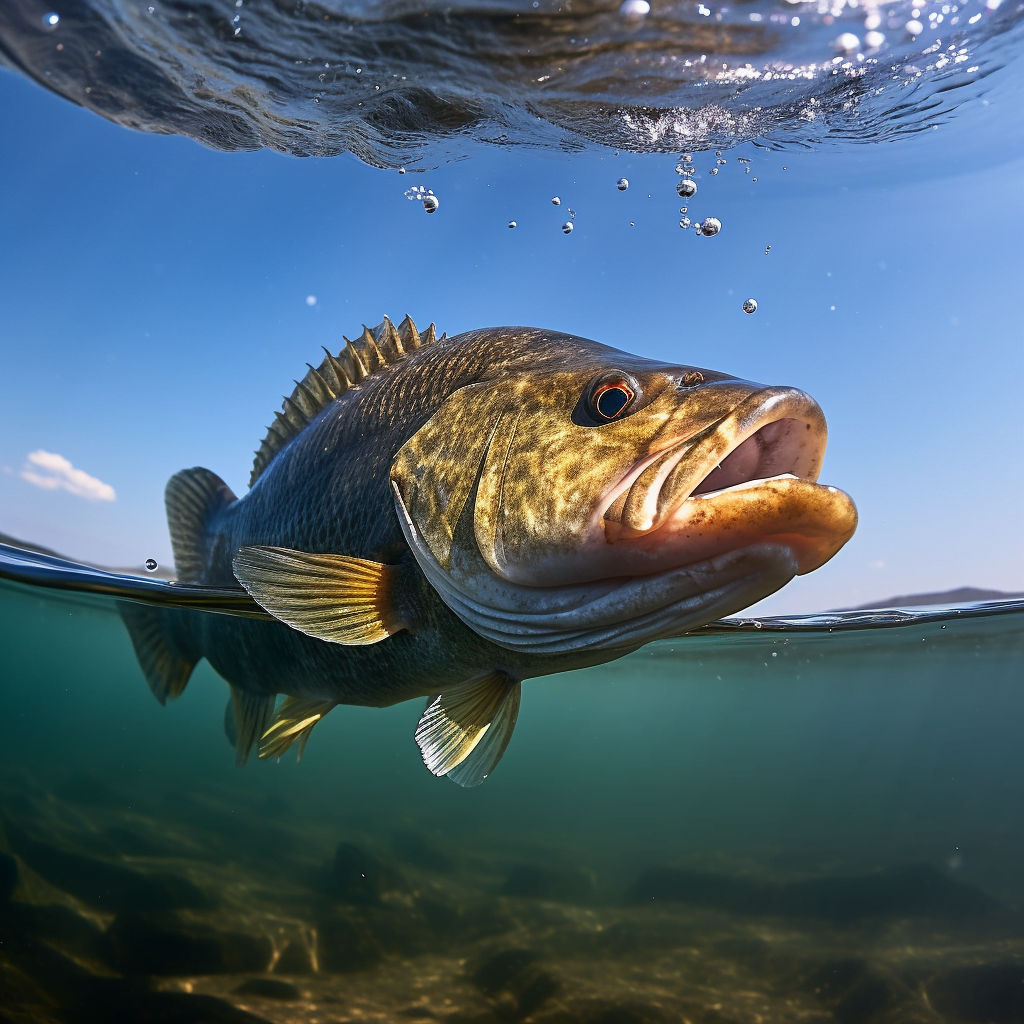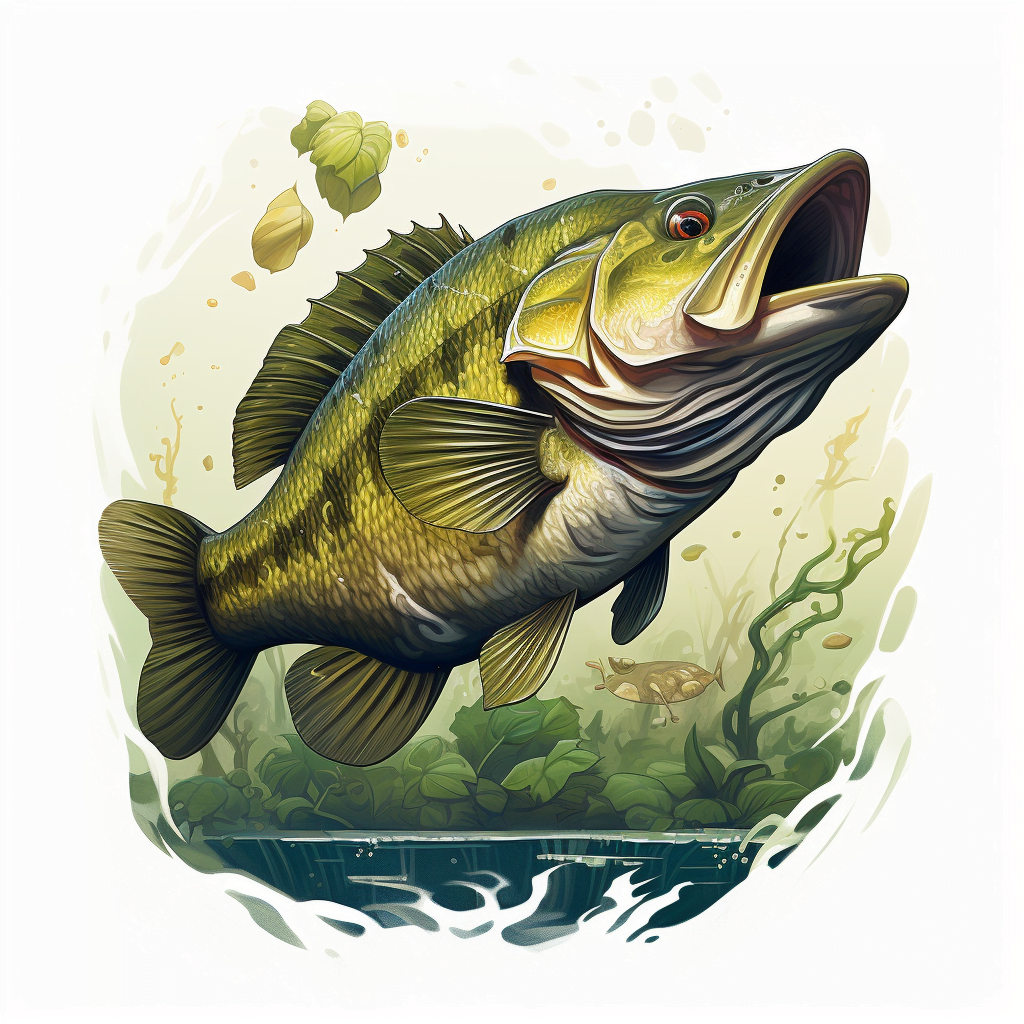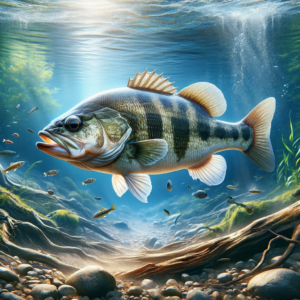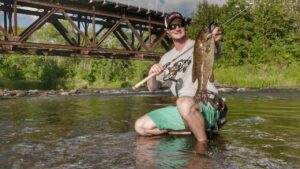Have you ever wondered what the best time of year is to catch smallmouth bass? Whether you’re an experienced angler or just starting out, timing can greatly impact your chances of a successful fishing trip. In this article, we will explore the different factors that influence the behavior of smallmouth bass and determine the best time of year to target these elusive fish. So, if you’re ready to improve your fishing game and increase your chances of landing that trophy catch, keep reading to find out more!
Smallmouth bass, like many fish, are influenced by various environmental factors that affect their behavior and feeding patterns. These factors include water temperature, weather conditions, and seasonal changes. Understanding these factors can help you determine the best time to plan your fishing trips, maximizing your chances of success. But don’t worry if you’re not familiar with these factors just yet – we’ll dive into each of them in more detail later in the article. By the end, you’ll have a solid understanding of how and when to target smallmouth bass effectively.
So, are you ready to become a smallmouth bass fishing expert? In the following paragraphs, we will take a closer look at the important considerations for successful smallmouth bass fishing, including the optimal water temperature, the impact of weather conditions, and the seasonal changes that affect the behavior of these fish. By the time you finish reading, you’ll be equipped with the knowledge you need to plan your fishing trips wisely and increase your chances of reeling in a trophy smallmouth bass. Let’s get started!

Best Time of Year for Smallmouth Bass Fishing
Smallmouth bass fishing is a popular and thrilling activity for many anglers. Known for their aggressive nature and exciting fights, smallmouth bass are highly sought after by fishing enthusiasts across the globe. However, to maximize your chances of success, it is important to understand the best time of year to target smallmouth bass. In this article, we will explore the different seasons and their impact on smallmouth bass fishing, as well as various tactics and techniques that can be employed during each season.
| Season | Water Temperature (°F) | Location & Behavior | Recommended Baits & Techniques |
|---|---|---|---|
| Spring | 55 – 65 | Shallow waters with gravel or rocky bottoms (spawning) | Crayfish imitations, jigs, soft plastics |
| Summer | >70 | Cooler, deeper waters and shaded areas | Topwater lures, soft plastics |
| Fall | Decreasing temps | Migrating to shallow waters, following baitfish | Spinnerbaits, crankbaits |
| Winter | Cold, below freezing | Deep waters, lethargic behavior | Jigging spoons, vertical jigging techniques |
The Smallmouth Bass
Before delving into the best time of year for smallmouth bass fishing, it is important to have a good understanding of the species itself. The smallmouth bass, scientifically known as Micropterus dolomieu, is a species of freshwater fish native to North America. They are known for their bronze-colored bodies with dark vertical bars, as well as their red eyes and distinctive small mouth. Smallmouth bass typically grow to around 12 to 24 inches in length and can weigh anywhere between 2 to 6 pounds, although larger specimens have been caught.
Description of the Smallmouth Bass
The smallmouth bass is characterized by its stout and elongated body, as well as its large mouth, which extends to the back of its eye. Its dorsal fin is also divided into two distinct parts, with spiny rays in the front portion and soft rays in the rear. This makes it easily distinguishable from the largemouth bass, which has a connected dorsal fin. Smallmouth bass have sharp teeth, which they use to capture and devour their prey, consisting mainly of small fish, crayfish, insects, and other aquatic organisms.
Habitat and Behavior of Smallmouth Bass
Smallmouth bass are primarily found in clear, cool, and rocky rivers, lakes, and reservoirs. They prefer water temperatures ranging from 60 to 70 degrees Fahrenheit, which makes them most active during the spring, summer, and early fall. Smallmouth bass are known to be highly territorial and often inhabit rocky areas, where they can seek shelter and ambush their prey. They are also sensitive to changes in water temperature and are known to move to deeper waters during colder months.
Factors Affecting Smallmouth Bass Fishing
To increase your chances of success while fishing for smallmouth bass, it is essential to consider various factors that can greatly influence their behavior and activity levels. Two critical factors to focus on are water temperature and seasonal patterns.
Water Temperature and Its Impact
Water temperature plays a crucial role in the behavior and feeding patterns of smallmouth bass. As mentioned earlier, smallmouth bass are most active when water temperatures range between 60 to 70 degrees Fahrenheit. During this optimal temperature range, smallmouth bass actively feed, making them more likely to strike at bait or lures presented by anglers. Conversely, when the water temperature drops below 50 degrees Fahrenheit or exceeds 80 degrees Fahrenheit, smallmouth bass become less active and are less likely to feed aggressively.
Seasonal Patterns and Smallmouth Bass Activity
Understanding seasonal patterns is crucial for successful smallmouth bass fishing. Each season presents its own unique challenges and opportunities, as the behavior and feeding patterns of smallmouth bass fluctuate throughout the year.
Springtime Fishing for Smallmouth Bass
Spring is undoubtedly one of the best times of the year for smallmouth bass fishing. During this season, smallmouth bass begin their spawning activities, which creates excellent opportunities for anglers.
Spawning Behavior of Smallmouth Bass
Smallmouth bass typically spawn in late spring when water temperatures range between 55 and 65 degrees Fahrenheit. They usually select shallow areas with gravel or rocky bottoms, such as submerged reefs, rocky shorelines, and gravel beds. Male smallmouth bass create and defend nests by fanning the gravel with their tails, while females lay their eggs and move on. This creates an aggressive and protective behavior in male smallmouth bass, making them more likely to strike at lures or baits that resemble intruders or threats to their nests.
Tactics and Techniques for Spring Fishing
When fishing for smallmouth bass during the spring, it is crucial to focus on areas with shallow water and rocky or gravel bottoms. In these areas, target points, boulders, and the edges of drop-offs. Recommended baits and lures include crayfish imitations, such as jigs, soft plastic tubes, and crankbaits. These mimic the main food source of smallmouth bass and trigger aggressive strikes. For live bait enthusiasts, using live crayfish or minnows can also be highly effective during the spring.

Summer Fishing for Smallmouth Bass
Summer is another productive season for smallmouth bass fishing, although it presents its own set of challenges due to higher water temperatures. However, with the right tactics, anglers can still have great success during this time of year.
Feeding Habits and Summer Patterns
During the summer, smallmouth bass tend to seek cooler and deeper waters, as they become more sluggish in response to warmer temperatures. They are more likely to remain in shaded areas, such as under overhanging trees, docks, or submerged structures. Smallmouth bass become more opportunistic and are willing to strike prey that comes within their reach. As such, it is important to present your bait or lure effectively and make it look enticing to tempt the bass into striking.
Best Baits and Lures for Summer Fishing
In the summer, smallmouth bass tend to feed on a variety of prey, including crayfish, baitfish, and insects. Topwater lures, such as poppers and buzzbaits, can be particularly effective during the early morning or late evening when smallmouth bass are more active near the surface. Soft plastic baits, such as creature baits, worms, and finesse jigs, are also excellent choices during the summer months. These imitate crayfish and other forage that smallmouth bass commonly feed on.
Fall Fishing for Smallmouth Bass
Fall is a transition period for smallmouth bass as they prepare for the colder months ahead. However, it is still a fantastic time to target these fish, as they exhibit unique behaviors and feeding patterns during this season.
Migration and Fall Patterns of Smallmouth Bass
As temperatures cool down in the fall, smallmouth bass begin to migrate from deeper waters and move back towards shallower areas. They follow baitfish schools in search of food and to fatten up for the winter. This makes fall an excellent time to catch trophy-sized smallmouth bass, as they actively feed to build up their energy reserves. Concentrate your fishing efforts near drop-offs, rocky points, and submerged structures where baitfish are known to congregate.
Effective Strategies for Fall Fishing
To maximize your success during the fall, consider using fast-moving lures, such as spinnerbaits, crankbaits, and lipless crankbaits. These lures imitate fleeing baitfish, triggering aggressive strikes from hungry smallmouth bass. Additionally, using live bait, such as shiners or fathead minnows, can yield excellent results during the fall season. These baits closely resemble the natural forage of smallmouth bass, enticing them to attack.
Winter Fishing for Smallmouth Bass
Winter fishing for smallmouth bass requires adapting to the coldwater conditions and the associated challenges. Although smallmouth bass activity slows down significantly in colder months, it is still possible to catch them with the right tactics and techniques.
Coldwater Tactics for Winter Fishing
During winter, smallmouth bass become lethargic due to the colder water temperatures. They tend to move to deeper waters and remain less active during this time. To successfully catch smallmouth bass during the winter, it is crucial to slow down your presentation and use lures that closely resemble their natural forage. Jigging spoons and vertical jigging techniques can be effective in enticing smallmouth bass to strike. Additionally, live bait, such as minnows or nightcrawlers, can be rigged on a drop-shot or Carolina rig to entice passive smallmouth bass.
Ice Fishing for Smallmouth Bass
Ice fishing for smallmouth bass is a thrilling and challenging experience. It requires specialized equipment, such as ice augers, ice rods, and tip-ups, to safely and effectively target these coldwater fish. When ice fishing for smallmouth bass, it is important to locate areas with structural features, such as weed beds, rock piles, or drop-offs, where smallmouth bass are likely to be present. Vertical jigging with ice spoons or using live bait on tip-ups can yield success in catching these hardy fish.
Factors to Consider for Successful Smallmouth Bass Fishing
While understanding the best time of year to fish for smallmouth bass is crucial, other factors can greatly affect your success rate. Consider the following factors when planning your next smallmouth bass fishing trip.
Location Selection and Scouting
The key to successful smallmouth bass fishing lies in selecting the right locations. Research and gather information about potential fishing spots, including rivers, lakes, and reservoirs known for harboring smallmouth bass populations. Look for areas with rock structures, underwater vegetation, and access to deeper water. Additionally, scouting the area beforehand can help identify potential hotspots, such as rocky points, submerged reefs, and areas with current.
Weather Conditions and Their Influence
Weather plays a significant role in the behavior and feeding patterns of smallmouth bass. Pay attention to weather forecasts, as factors such as barometric pressure, wind direction, cloud cover, and temperature can impact the activity levels of smallmouth bass. For example, smallmouth bass tend to be more active before a frontal system or on overcast days, which tend to improve fishing conditions. Plan your fishing trips accordingly to increase your chances of success.
Gear and Equipment for Smallmouth Bass Fishing
Selecting the right gear and equipment is vital for an enjoyable and successful smallmouth bass fishing experience. Consider the following recommendations when choosing your fishing rod, reel, line, and tackle.
Choosing the Right Fishing Rod and Reel
When fishing for smallmouth bass, a medium to medium-heavy spinning rod in the 6 to 7-foot range is ideal. This allows for accurate casting and better control while fighting these hard-fighting fish. Pair your rod with a spinning reel of appropriate size, capable of holding enough fishing line, and providing a smooth drag system.
Recommended Fishing Lines and Tackle
For smallmouth bass fishing, monofilament or fluorocarbon fishing lines in the 8 to 12-pound test range are suitable for most situations. These lines provide good sensitivity, durability, and sufficient strength to handle the aggressive strikes and fights of smallmouth bass. In terms of tackle, a variety of baits and lures can be effective, including jigs, soft plastic tubes, crankbaits, spinnerbaits, and topwater lures. Experiment with different colors, sizes, and retrieve techniques to determine the most successful combinations for your specific fishing conditions.
Regulations and Conservation for Smallmouth Bass Fishing
When engaging in smallmouth bass fishing, it is essential to adhere to local fishing regulations and practices that promote conservation. Always check and obtain the necessary fishing licenses required for the area you plan to fish in. Familiarize yourself with catch limits, size restrictions, and any special regulations that may be in place to protect the smallmouth bass population. Additionally, practice catch and release whenever possible to ensure the sustainability of this valuable fishery for future generations.
Conclusion
Smallmouth bass fishing can be an incredibly rewarding and exhilarating experience for anglers of all skill levels. Understanding the best time of year to target smallmouth bass, as well as the various tactics and techniques that can be employed during each season, greatly increases your chances of success. Whether you choose to fish during the spring spawning period, the active summer months, the fall feeding frenzy, or even during the challenging winter season, smallmouth bass can provide endless excitement and memories that will last a lifetime. Remember to respect the species, follow local regulations, and practice conservation to ensure the sustainable enjoyment of smallmouth bass fishing for years to come.




